埕市語鹽
Yancheng City Tongue
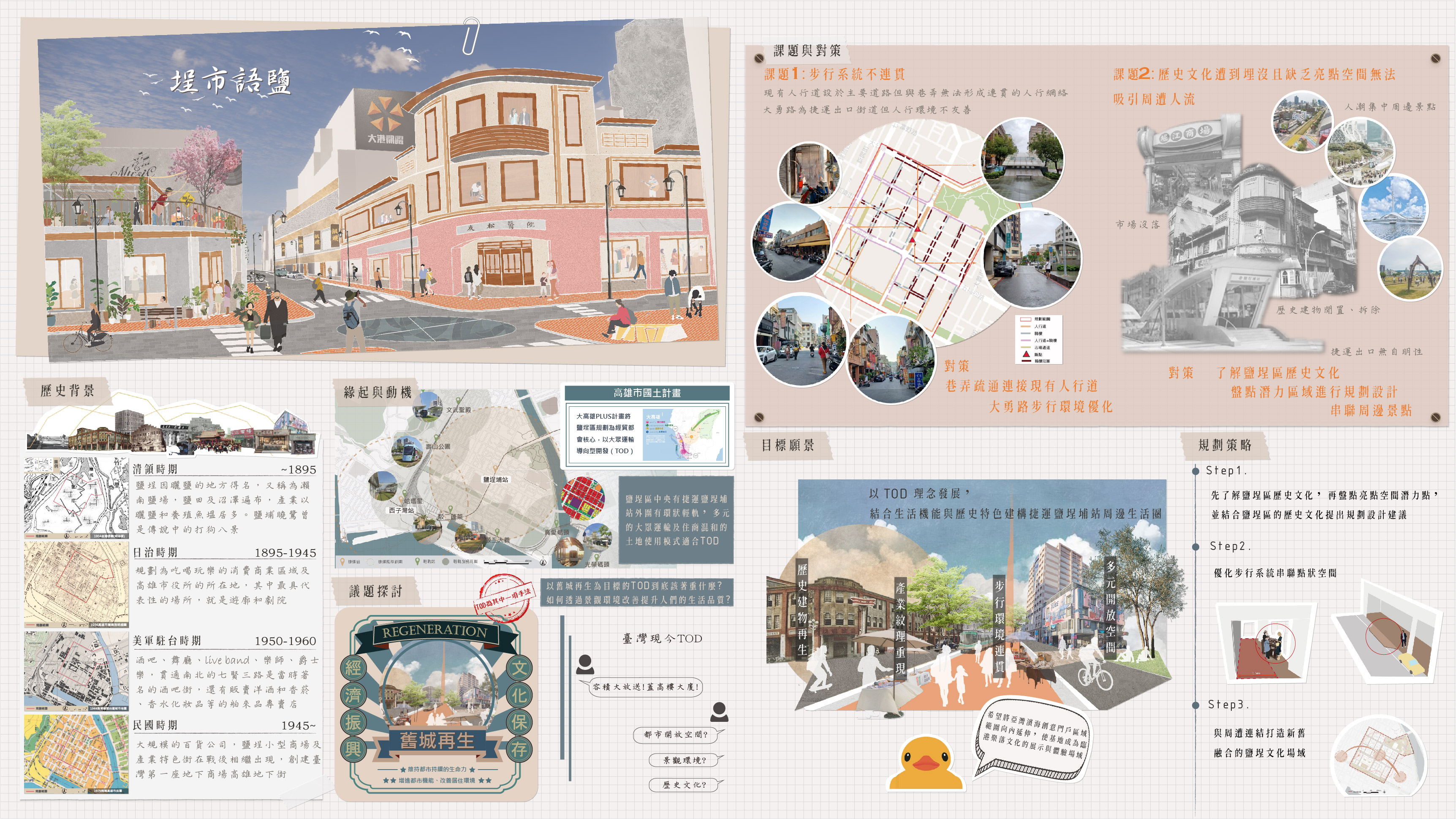
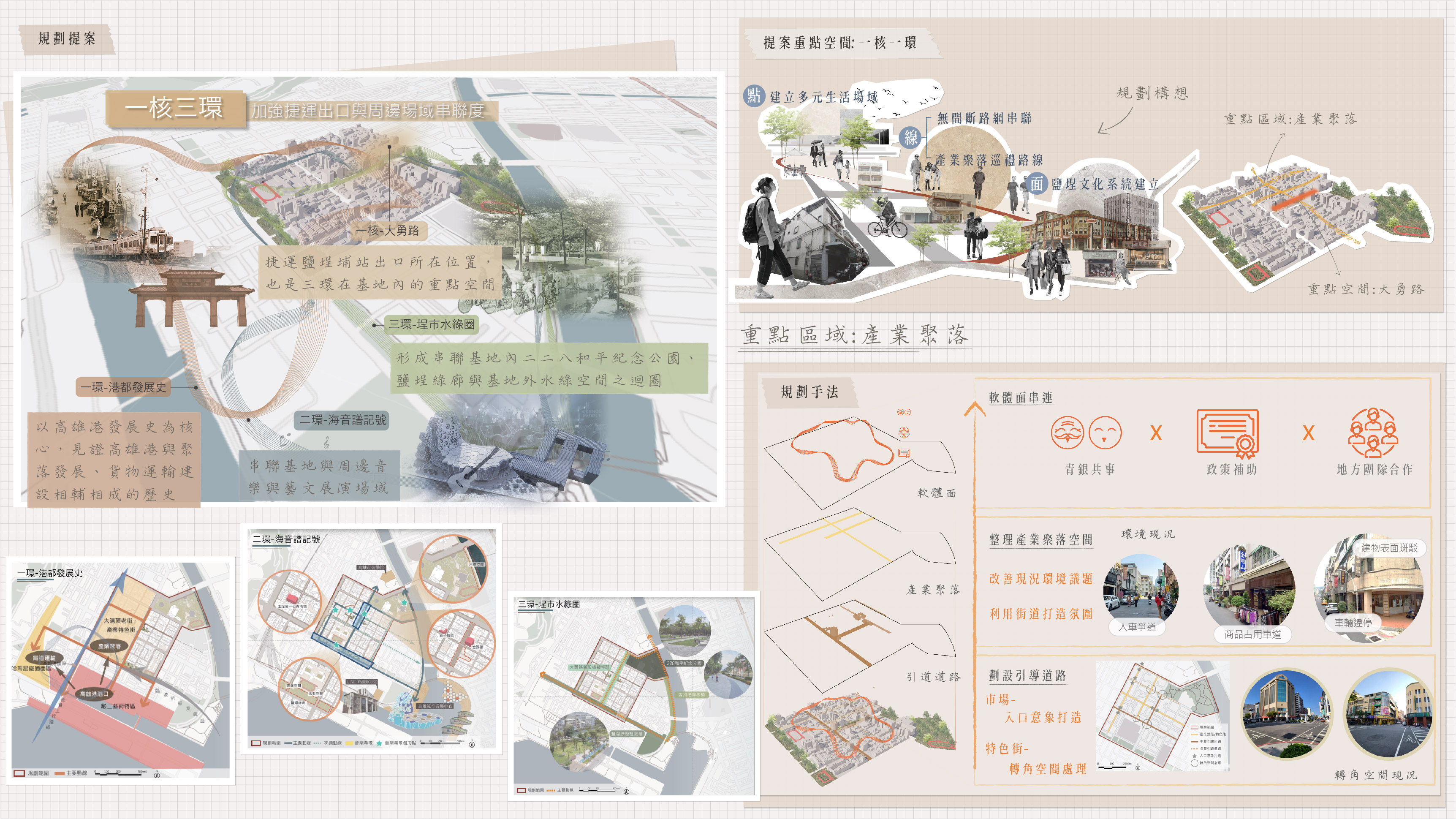
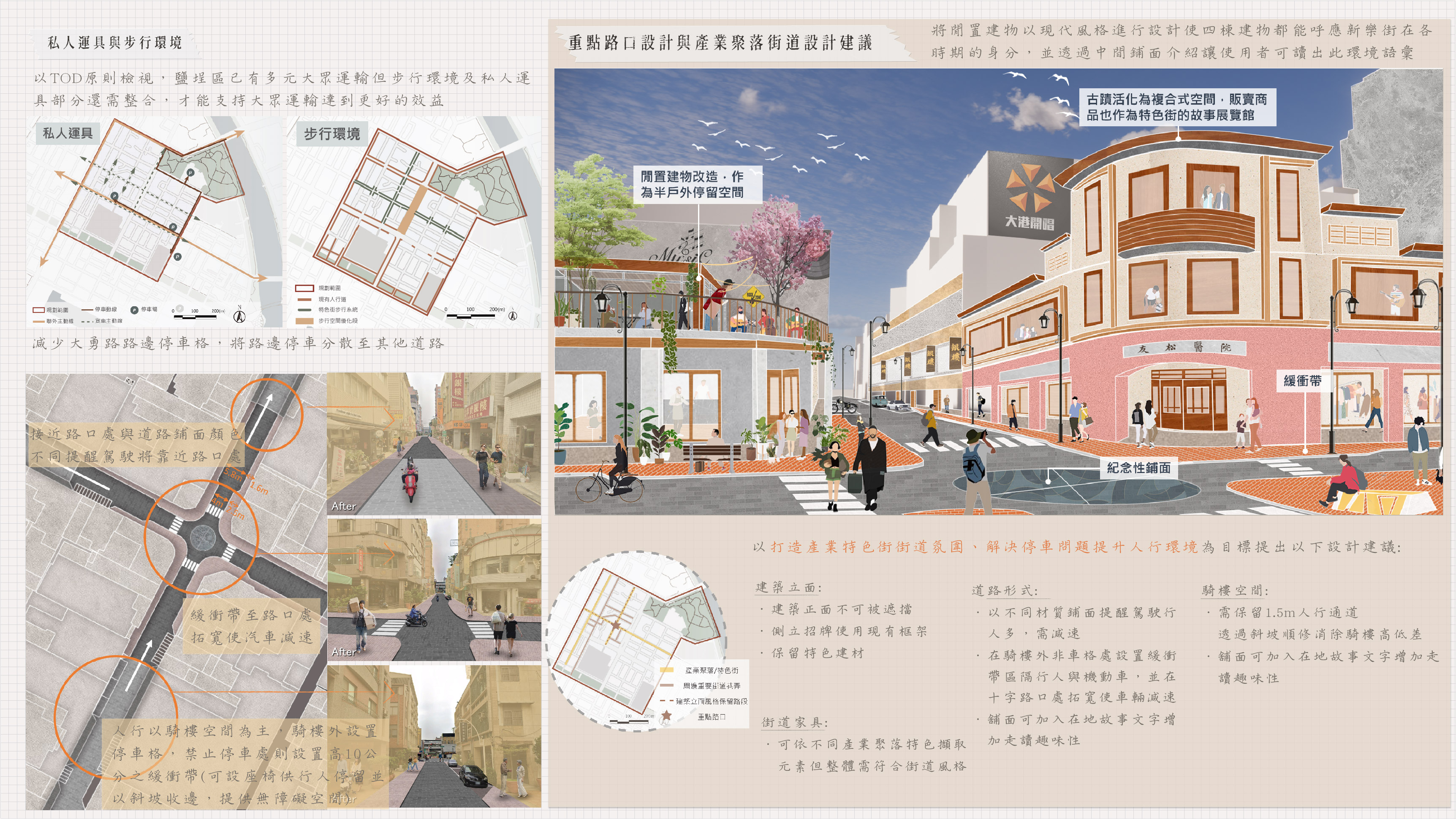
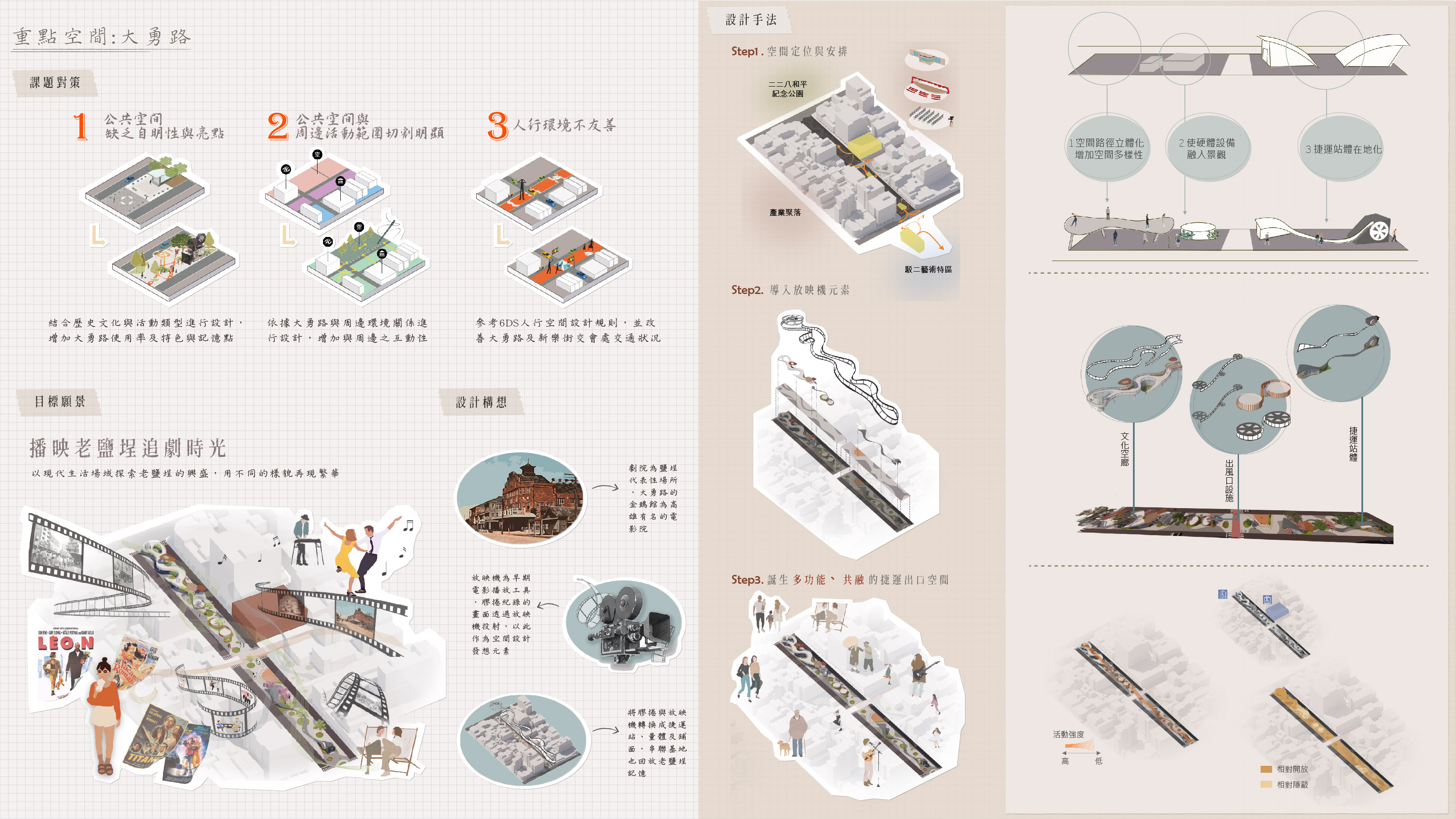
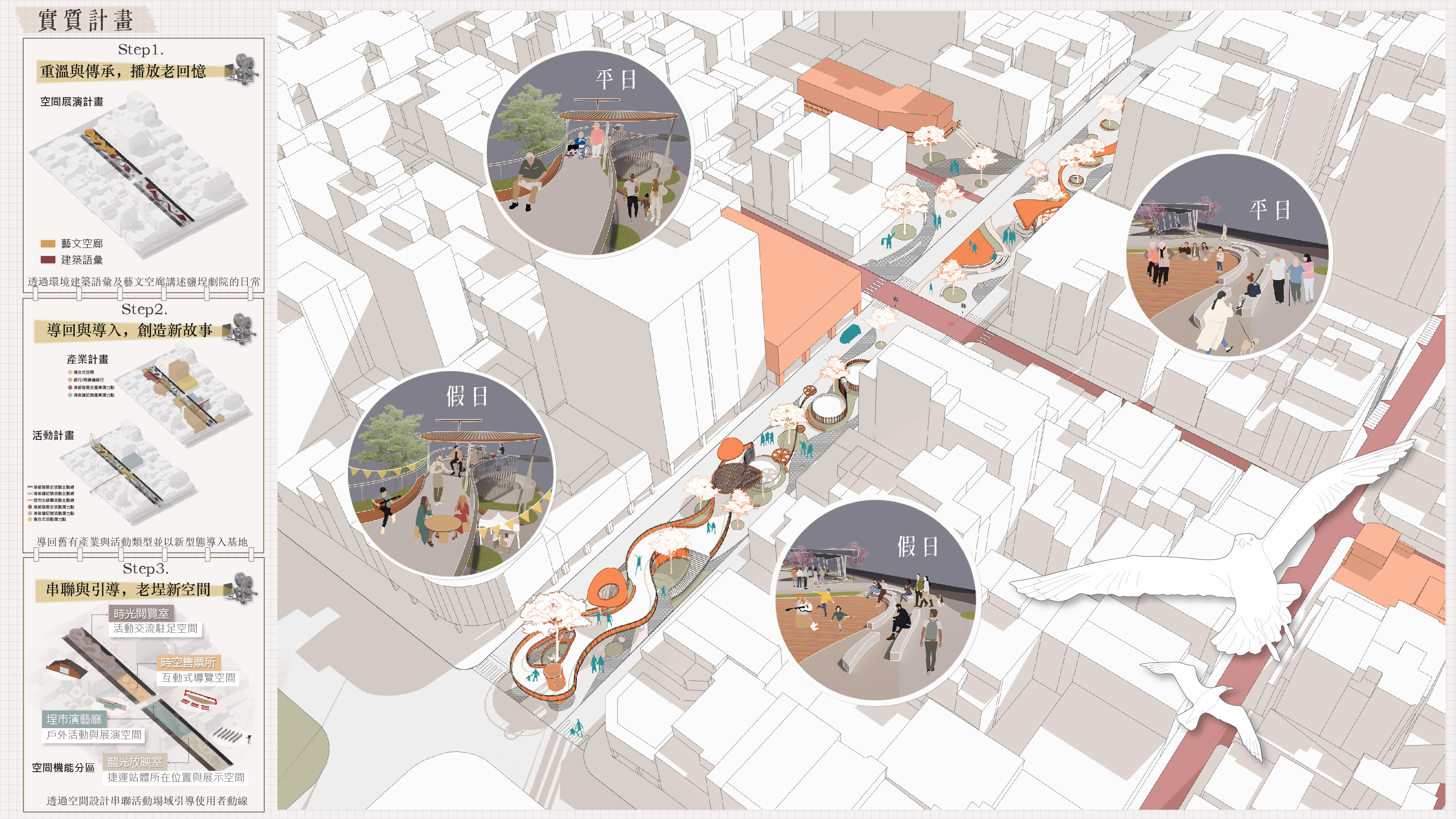
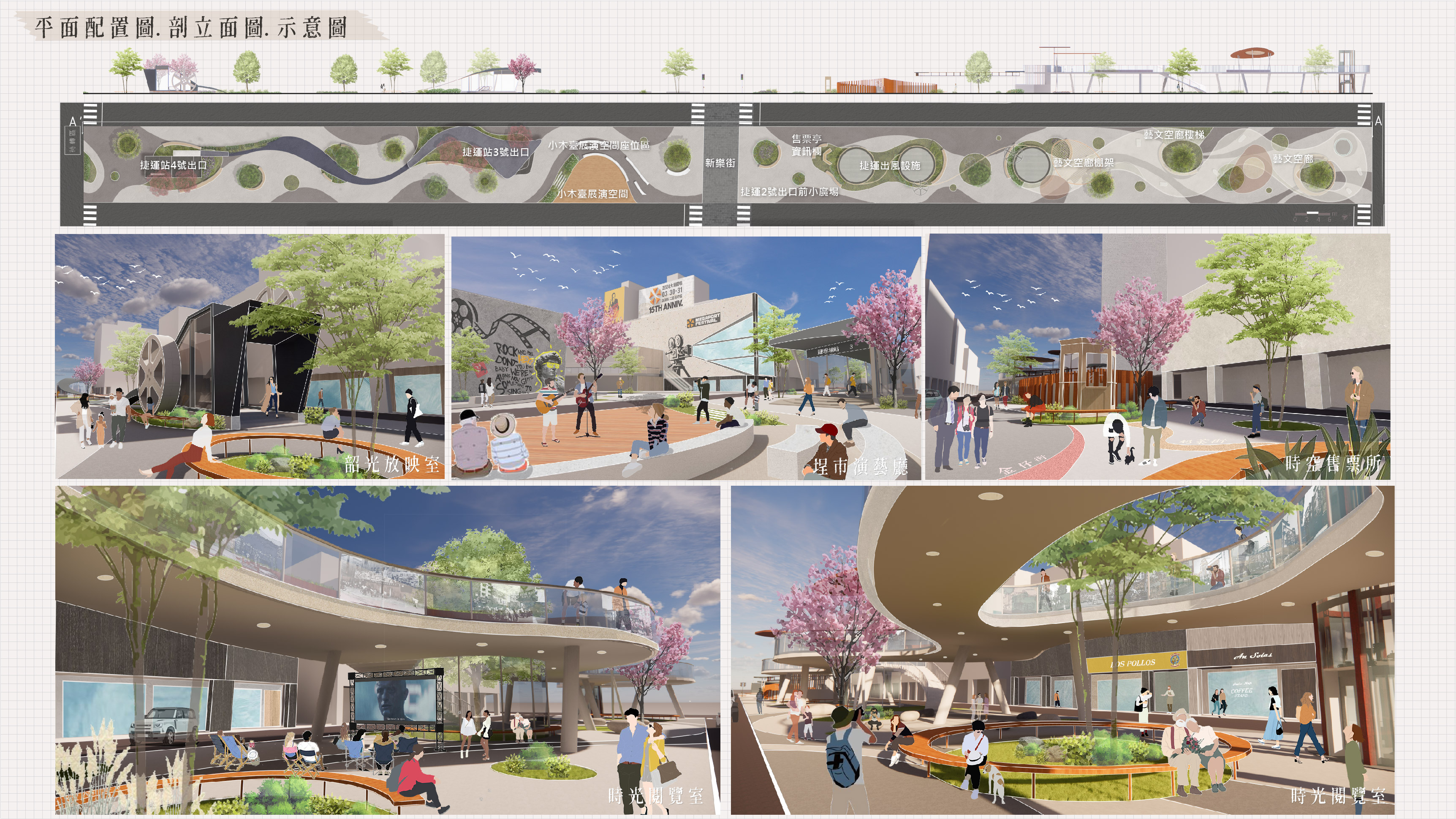
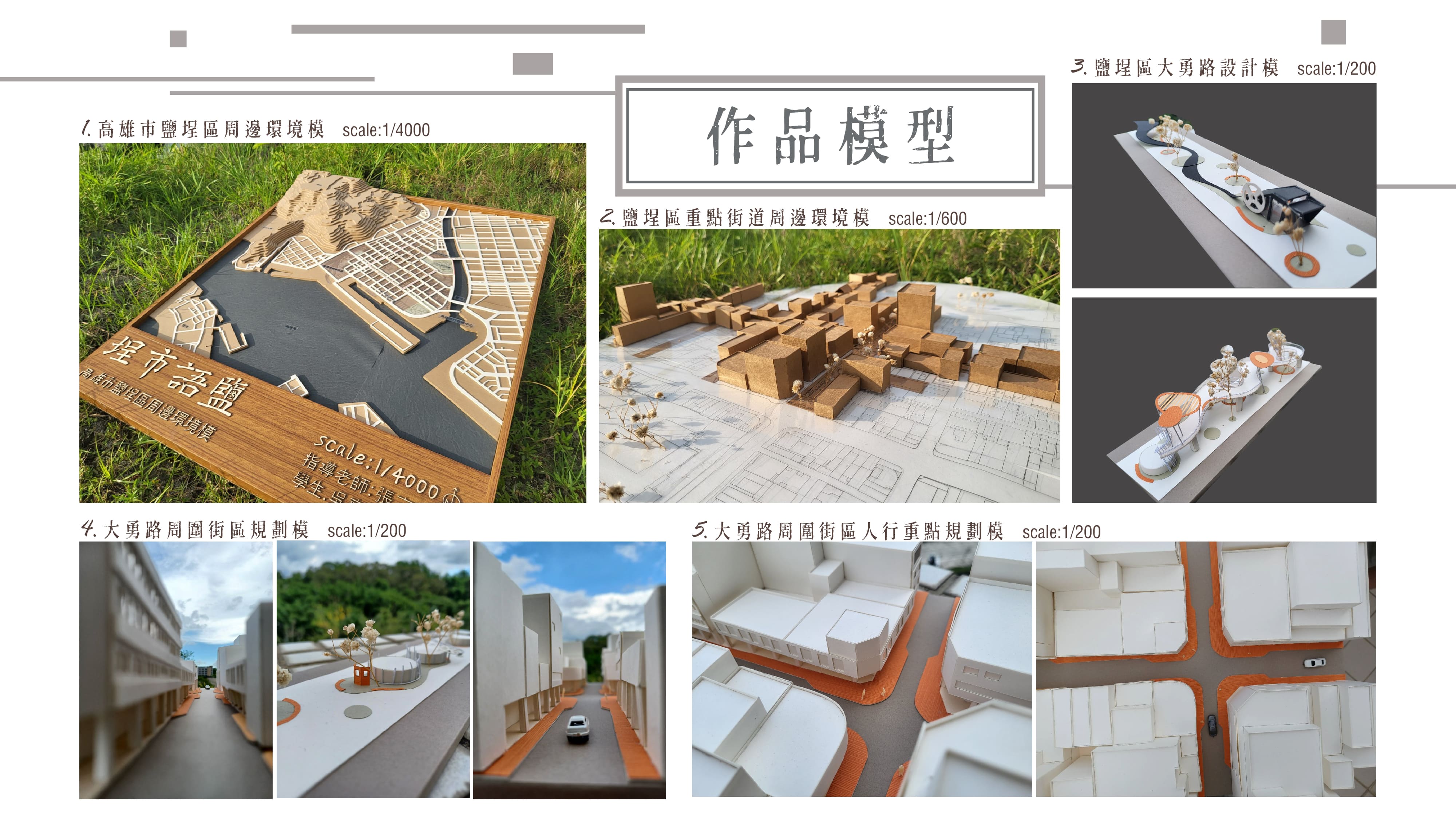
鹽埕區在日治時期填海造陸成為高雄最早發展的市區之一,後更因美軍駐台時期及戰後民國初期的發展,累積了多元的生活樣貌及歷史文化,是個歷史底蘊濃厚的地方,且相較於周邊高樓林立的前金區、苓雅區,此區保留高雄的舊城樣貌。隨著市政遷出、商圈轉移,鹽埕區和許多老舊城區一樣成了沒落的舊城,近年雖然駁二藝術特區與高雄流行音樂中心有許多人潮,但大多只是經過較少停留在舊城區。我們希望透過微觀的大眾運輸導向型發展手法結合鹽埕的歷史文化及現代藝文能量,使其以不同樣貌再現風華。藉由「一核三環」的規劃構想加強捷運出口與周邊場域串聯度,使亞灣計畫中的濱海創意門戶之藝文景觀能從駁二藝術特區往內陸延伸,讓舊城區的聚落發展與建物型態做為具歷史意義的藝文能量,透過空間述說高雄港與鹽埕聚落發展的歷史記憶。此外,對捷運鹽埕埔站周邊產業聚落進行環境改善,並針對我們計畫的核心區域捷運鹽埕埔站所在之大勇路進行重新設計。希望藉此打造舒適、多元的捷運出口場域。
Yancheng City Tongue
Yancheng District, originally reclaimed from the sea during the Japanese colonial period, became one of Kaohsiung’s earliest developed urban areas. It later flourished due to the presence of U.S. military forces in Taiwan and the post-war economic boom, accumulating a rich and diverse cultural and historical landscape. Unlike the surrounding districts of Qianjin and Lingya, which are filled with high-rises, Yancheng has preserved the old city’s appearance. However, as government offices relocated and commercial hubs shifted, Yancheng, like many old districts, declined.Although the Pier-2 Art Center and Kaohsiung Music Center attract visitors, most do not linger in the historic areas. We aim to revitalize Yancheng by integrating a micro-scale, transit-oriented development approach with its historical and contemporary cultural assets. Our “One Core, Three Loops” plan enhances connections between MRT exits and surrounding areas, extending the artistic and cultural landscape of the Asia Bay waterfront creative gateway from Pier-2 further inland.By improving the environment around MRT Yanchengpu Station and redesigning Dayong Road, where the station is located, we seek to create a comfortable, diverse public space that reflects Yancheng’s historical significance while fostering a vibrant cultural and artistic hub.
國立成功大學 都市計劃學系
(碩一)
吳齊祐
國立臺灣科技大學 建築系
(碩一) 指導老師 張高雯